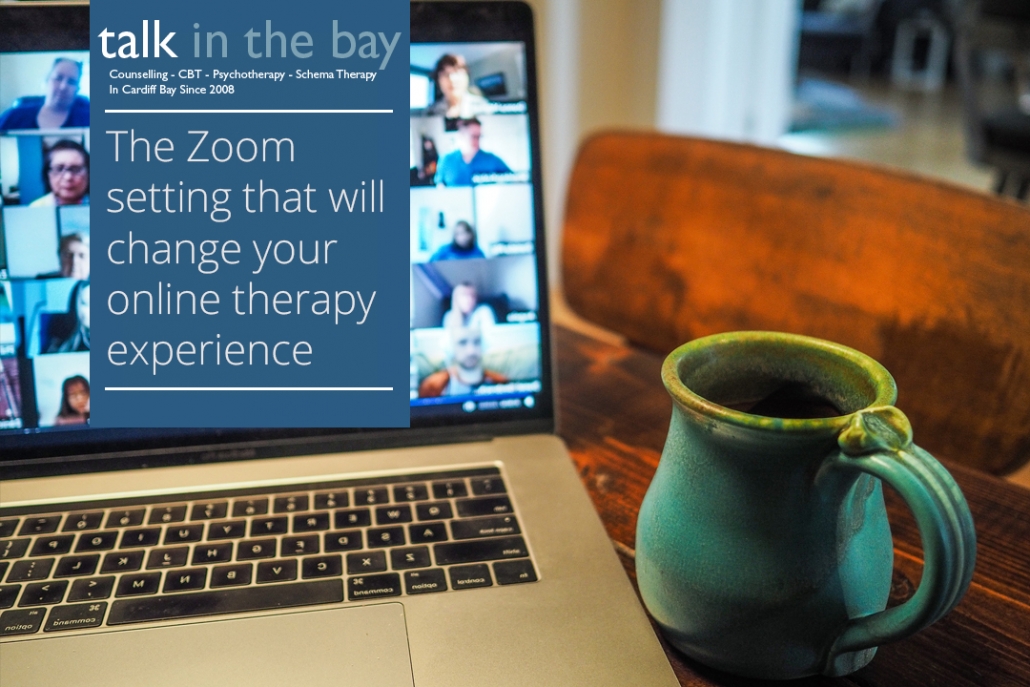Feeling awkward at the beginning of your online therapy is totally normal. Even if you’ve met your therapist before and known them for a while.
Being in lockdown and socially distancing from our friends, sometimes the only way to stay in touch is video calling. If this is something you aren’t used to doing, even with your closest friends, this can be really awkward.
By now, most of us have tried this and noticed the difference between online interactions and real life interactions. Go straight to the setting that can change your online therapy experience.
Why does it feel different to see a friend or a therapist online? First of all, it’s different as your focus is on the screen. You rely much more on the video and conversation than the environment.
Silent moments are amplified, maybe you or the person you are video calling are wondering whether there is a problem with the connection. Silence is valued within therapy but with body language being reduced it can be tricky to be comfortable in this silence. If you need silence, just to gather your thoughts or process something, it might help to simply state “I just need a moment to think about that”. Never hesitate to give your therapist feedback if there was too much or too little silence.
The environment can be a huge cause of anxiety or worry as well. Depending on how loud your household is, whether this is due to animals, children or other adults.
For instance, it might be embarrassing if you’re unable to talk because of the noise or because you’re worried about others hearing you. It could also be daunting bringing someone into your house, even though it is virtually.
So prepare your space and those living with you. Try to encourage other members of your household to take a walk or bringing the dog and child for some fresh air whilst you are having your session. Create that time and space for your session and make it comfortable. And if you can’t, talk to your therapist about what is uncomfortable and resolve whether online sessions are the best for you.
Finally, whether we are at a cafe or pub with our friends or in a therapy session it is rare that we would sit in front of a mirror with a constant view of ourselves (and our home). Staring at yourself, you may be conscious of the light in the room, your hair, the clothes you are wearing or your posture.
Seeing yourself talk and cry is something most of us haven’t done before. This can be really distracting! It might even stand in the way of you engaging in therapy. On the other hand you might use it as a tool for reflection. Or you might simply not like seeing yourself on the screen!
If it stops you from engaging in working therapeutically there is a solution. Hide your video from yourself!
At Talk In The Bay we use Zoom and here’s how to hide your video:
Zoom has a Hide Yourself option. Yay! But it doesn’t work for one to one video session. Don’t worry, Zapier* figured out how to do it.
-
- Switch to Gallery View or Fullscreen mode
-
- In fullscreen, the self-view will now be in a pop-up window. Click the line option to hide it entirely.
Thank you, Zapier!
See guide with pictures here: https://zapier.com/blog/hide-myself-in-zoom-meetings/?utm_source=Iterable&utm_medium=email&utm_campaign=itbl-gbl-eng-email-blog_advanced_slack_features_1309013
*Zapier is an online automation tool that connects your favorite apps, such as Gmail, Slack, Mailchimp, and more. You can connect two or more apps to automate repetitive tasks without coding or relying on developers to build the integration.
Other related links:
https://www.realsimple.com/health/mind-mood/emotional-health/online-therapy-tips



